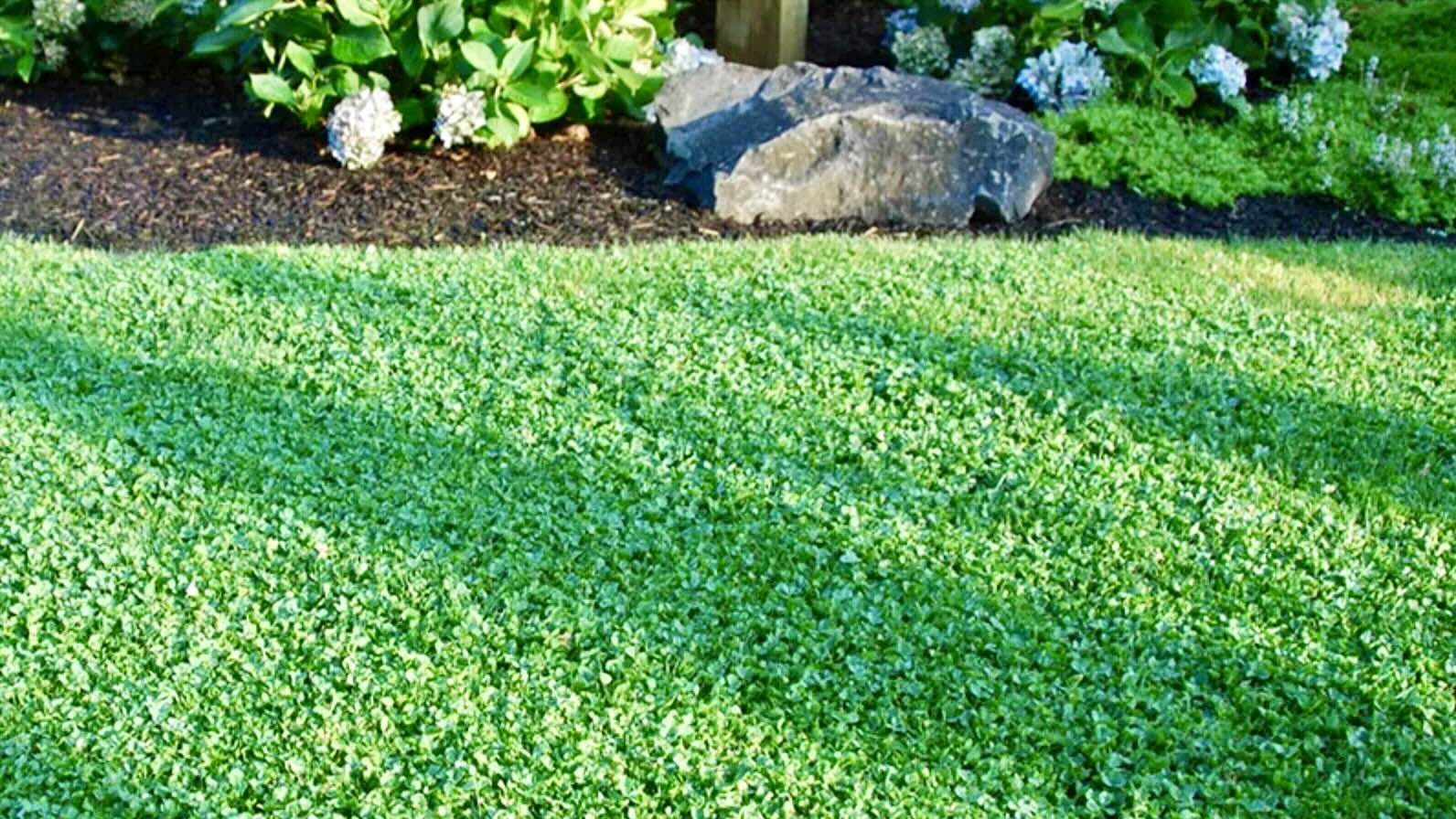
How to lower lawn maintenance by planting clover?
Introduction
Your lawn is not your friend. A true friend wouldn’t monopolize your weekeds with endless mowing, raking, thatching, weeding, fetilizing, re-seeding and watering tasks. Caring for my lawn has been a thankless task. It seems like every spring I am back to square one, only to do it all over again.
“A weed is a plant that has mastered every survival skill except for learning how to grow in rows.” - Doug Larson
For the sake of home resale value, you don’t want to do strange stuff to your yard.

However, there are things you can do to minimize lawn maintenance.
Clover lawn
Years ago clover was shunned as being a weed, something to be eliminated from your lawn. However in recent years, many of us proud home owners have seen the light.

Clover is a dense ground cover known for its shamrock-shaped leaves and pollinator-friendly flowers. It’s a legume in the same family as peas, peanuts and beans. Clover is special because it can perform nitrogen fixation. It takes nitrogen from the air and deposits it into surrounding soil, providing fetilizer for the rest of the lawn. Because of its nitrogen-fixing abilities, clover is considered a living mulch.
Clover has several advantages over traditional turfgrass.
- Requires less mowing
- Heat, drought and shade tolerant
- Does not need to be fertilized
- Minimizes the need for dethatching
Every 2-3 years I lightly seed my yard with clover. At this point my yard is a 50/50 mix of both traditional turfgrass and clover. It looks good and has definately reduced my lawn maintenance. Why not try overseeding your lawn with clover this year?
Prep work
The first step is to do some cleanup. The clover seed needs to be able to actually reach the soil to germinate.
Gloves
First, wear quality leather gloves when using a rake. Blisters have a way of sneaking up on you. And your hands will hurt later after you have returned to your natural habitat behind the keyboard.
Dethatching
Most traditional turf lawns eventually develop a thick matting consisting of living, dormant or dead grass. The first step is to loosen some of this up with a thatching rake.
Our final goal is overseeding, mixing clover seeds into your existing lawn. Don’t get carried away and remove all the grass.
- Designed to efficiently remove thatch layer
- High-quality stainless steel blades
- Easy assembly & storage
- Full length 63", collapsed size 32", adjustable to any length in between
- Tail of the pole fitted with a rubber anti-slip sleeve, for comfort
Raking
You will need to remove all the dead grass and debris using a rake. I prefer one with metal tines like this because it also helps further dethatch the lawn, exposing small soil gaps for the seeds.
- Quickly clean leaves, grass clippings, and small debris off your lawn
- Rake’s teeth extend from 8" to 23" wide and lock in any position, for reaching smaller areas
- Lightweight telecoping handle
- Stores easily in minimal space
Clover seeds
There are a lot of different clover seeds available. Here is a brand that has worked well for my lawn.
- White dutch clover seed is a perennial lawn turf alternative
- Boost soil nitrogen levels
- Also good for erosion control
- Sow seed at 1/4 lb - 1/2 lb per 1,000 square feet or 8 to 10 lbs per acre
Planting
After raking you are ready to spread the seeds. You could certainly use your hand, but to help apply a uniform layer of seeds I suggest using a seed spreader. This will help you avoid putting the seed on too thick and running out early.
- Perfect hand-held spreader for smaller yards
- Engineered for smooth, even coverage
- Adjustable arm support helps provide maximum comfort
I recommend embedding the seeds by gently scraping the area using a rake with sharp tongs.
(Updated: )





